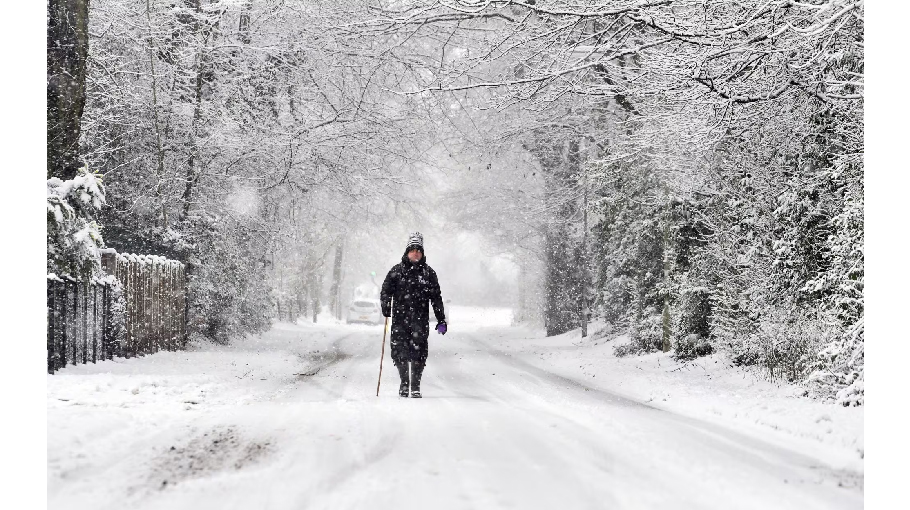Europe is winning the winter war by sheer luck

It may sound flippant to argue winter is over — after all, the weather has just turned cold in Europe, it’s still the middle of January, and February and March lie ahead. For the European natural gas market, however, the season is done and dusted.
Europe is now crossing the halfway point of its heating quarter. On average, the coming days are typically the coldest of the year. Almost like clockwork, wintry weather returns and snow bedecks the annual meeting of the World Economic Forum in the Alpine resort of Davos. Indeed, from London to Berlin, temperatures have now dropped to freezing. But even if the rest of the winter turns to be colder-than-normal, the region would have enough gas in storage to avert the worst-case scenario: running out as a result of Russia reducing exports as part of its strategy against Ukraine’s allies.
For gas traders, it’s a green light to sell. The wholesale price of natural gas in Europe fell earlier this week to a 17-month low of €55 ($60) per megawatt hour, down more than 80% from a peak of nearly €350 per MWh in late August. German wholesale one-year forward electricity prices, a regional benchmark, have also collapsed, trading at around €150 this week, down from a peak of almost €1,000 six months ago.
To be sure, if the colder-than-normal weather of the next few days persists into February and March, gas and electricity prices would rise again. But those gains would be limited. With half of the heating season already in the rear-view mirror and gas inventories high enough, a gas price superspike similar to what we witnessed last August is all but impossible. Keep down your “Hip, hip hooray,” however. All this has come at a huge cost.
European governments have spent nearly €1 trillion subsidizing energy supplies. Despite that, both natural gas and electricity wholesale and retail prices remain well above pre-crisis levels. Due to lag effects, retail energy bills won’t drop until the second half of the year. And because governments have insulated families from the brunt of the wholesale market price spike, they will also see smaller price reductions in the future.
Nothing suggests a return to pre-2022 prices. For example, Cornwall Insight, a consultancy, forecasts that the annual gas-and-power bill for the average U.K. family would hover around £2,800 in the second half of 2023. They’d been paying less than £1,500 in the four years through 2021. Still, that’s a lot better than fears of bills topping £5,000 this year.
How did Europe go from crisis to relative calm in just six months? First, the region got very lucky, for want of a better word, with the weather — a factor it cannot control and the result of the broader calamity of climate change. Spring-like temperatures on New Year’s Eve are a cause of celebration for anyone worried about gas prices. But they should be concerning for anyone worried about the environment.
From Dec. 19 to Jan, 16, the key gas-consuming region of North-West Europe enjoyed 29 consecutive days of above-normal temperatures. That came on top of the 37 consecutive days of warm weather from mid-October until mid-November. Considered in heating degree days (HDD) — a measure of energy demand compared against mean local temperatures — the winter has so far been about 12% warmer than the 30-year average. In terms of gas consumption, that makes a huge difference. By now, North-West Europe should have weathered at least 1,250 HDDs, but instead it has faced just 1,100 HDDs.
European vulnerability to temperature shifts is palpable when you look back at the cold snap of early December. All it took was a few cold, windless days to send gas prices up. Short-term electricity jumped to a record high. But the cold weather went away nearly as fast as it arrived.
Second, Europe has reduced industrial gas demand significantly, with some factories halting operations and others switching to diesel. For example, the production of chemicals in Germany has collapsed. Coal consumption has also increased. German power plants, in particular, are burning the most polluting of fossil fuels to save on gas.
All in all, European gas demand has been running as much as 20% below the five-year average. In Germany, gas consumption in early January was at times down 38% below the average. With demand down sharply, Europe hasn’t depleted its gas store as fast as expected — or as much as I feared. Currently, storage tanks are 82% full, compared with the five-year average for mid-January of 62%.
Even a repeat of the 2013-14 winter — when Europe drew down considerable inventories in the second half of the season — would reduce European levels to only about 45% by early April. That is well above the five-year average of 33% — and any panic threshold. With more gas in store now, European utilities and governments would need to buy less over the spring and summer to prepare for the 2023-24 season. The earlier the current winter ends, the later the next one starts.
Javier Blas is a Bloomberg Opinion columnist covering energy and commodities. He is coauthor of “The World for Sale: Money, Power and the Traders Who Barter the Earth’s Resources.”
Source: Bloomberg



